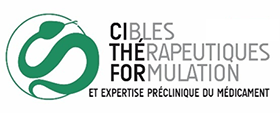L'article "Higher-energy collision dissociation for the quantification by liquid chromatography-tandem ion trap mass spectrometry of nitric oxide metabolites coming from S-nitrosoglutathione in an in vitro model of intestinal barrier" vient de paraître dans le journal "Rapid Communications in Mass Spectrometry"
Auteurs : Haiyan Yu, Justine Bonetti, Caroline Gaucher, Isabelle Fries, Lionel Vernex-Loset, Pierre Leroy, Patrick Chaimbault
Référence de l'article : Rapid Communications in Mass Spectrometry, doi: 10.1002/rcm.8287
Abstract
Rationale
The potency of S‐nitrosoglutathione (GSNO) as a nitric oxide (NO) donor to treat cardiovascular diseases (CVDs) has been highlighted in numerous studies. In order to study its bioavailability after oral administration, which represents the most convenient route for the chronic treatment of CVDs, it is essential to develop an analytical method permitting (i) the simultaneous measurement of GSNO metabolites, i.e. nitrite, S‐nitrosothiols (RSNOs) and nitrate and (ii) them to be distinguished from other sources (endogenous synthesis and diet).
Methods
Exogenous GSNO was labeled with 15N, and the GS15NO metabolites after conversion to nitrite ion were derivatized with 2,3‐diaminonaphthalene. The resulting 2,3‐naphthotriazole was quantified by liquid chromatography‐tandem ion trap mass spectrometry (LC/ITMS/MS) in multiple reaction monitoring mode after Higher‐energy Collision Dissociation (HCD). Finally, the validated method was applied to an in vitro model of intestinal barrier (monolayer of Caco‐2 cells) to study GS15NO intestinal permeability.
Results
A LC/ITMS/MS method based on an original transition (m/z 171 to 156) for sodium 15N‐nitrite, GS15NO and sodium 15N‐nitrate measurements was validated, with recovery of 100.8 ± 3.8, 98.0 ± 2.7 and 104.1 ± 3.3 %, respectively. Intra‐ and inter‐day variabilities were below 13.4 and 12.6 %, and the limit of quantification reached 5 nM (signal over blank = 4). The permeability of labeled GS15NO (10‐100 μM) was evaluated by calculating its apparent permeability coefficient (Papp).
Conclusions
A quantitative LC‐ITMS/MS method using HCD was developed for the first time to selectively monitor GS15NO metabolites. The assay allowed evaluating GS15NO intestinal permeability and situated this drug candidate within the middle permeability class according to FDA guidelines. In addition, the present method has opened the perspective of a more fundamental work aiming at studying the fragmentation mechanism leading to the ion at m/z 156 in HCD tandem mass spectrometry in the presence of acetonitrile.


